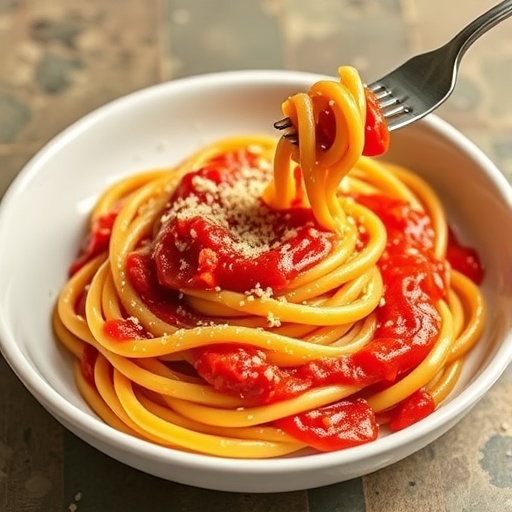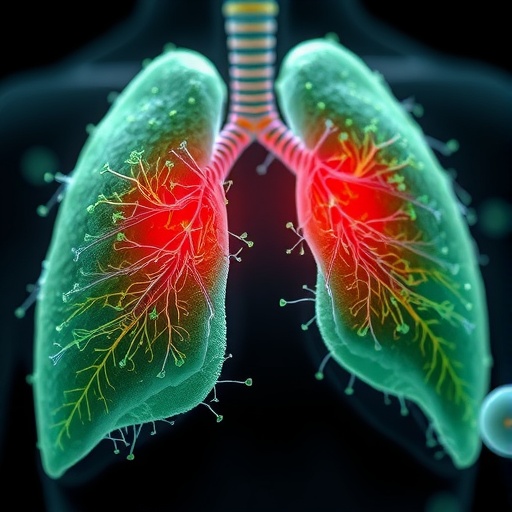The art of crafting the perfect cacio e pepe pasta—an iconic Italian dish celebrated for its simplicity—has long eluded even the most seasoned cooks, including professional scientists from Italy. Now, a team of physicists and researchers from the Institute of Science and Technology Austria (ISTA), alongside collaborators from the Max Planck Institute in Dresden, the University of Padua, and the University of Barcelona, have elevated this culinary mystery to a subject of rigorous scientific inquiry. Their efforts, which blend the precision of physics with the sensory delight of gastronomy, have just been rewarded with the Ig Nobel Prize—a whimsical accolade recognizing research that first provokes laughter and then thoughtful analysis. This accolade, awarded during a ceremony in Boston, USA, celebrates the team’s breakthrough in decoding the physical and chemical processes behind the elusive, creamy perfection of cacio e pepe sauce.
At first glance, studying pasta sauce might seem frivolous. But this research taps into the intricate science of complex fluids and phase transitions, a domain of physics usually reserved for exotic materials and industrial processes. The central challenge in cacio e pepe lies in producing a stable emulsion between Pecorino Romano cheese and pasta water infused with starch, all without the sauce breaking down into an unappetizing clumpy mass. Traditional methods rely heavily on intuition and careful timing, but often the sauce ends up resembling a stringy mozzarella conglomerate rather than a smooth, velvety coating. This culinary puzzle presented an ideal candidate for a physics-based approach, where the interplay of temperature, protein chemistry, and starch gelatinization could be quantitatively examined.
Fabrizio Olmeda, a postdoctoral researcher at ISTA specializing in statistical physics of complex systems, spearheaded this investigation. His interest in this project mirrors a broader philosophy: embracing curiosity-driven research that transcends conventional disciplinary boundaries. Though his primary expertise resides in single-cell genomics physics, Olmeda and his colleagues recognized that the principles governing protein aggregation and starch behavior in cacio e pepe sauce have direct analogues in phase transition phenomena. By reframing a kitchen challenge in terms of soft matter physics, they opened new avenues for understanding everyday materials and their transformations.
The key technical obstacle lies in the delicate balance between the denaturation of cheese proteins and the stabilizing effect of starch molecules present in the pasta cooking water. When heated beyond approximately 65 degrees Celsius, Pecorino Romano’s proteins denature and aggregate in a manner that leads to phase separation and coagulation—effectively ruining the desired creamy consistency. This phenomenon parallels protein aggregation seen in biotechnology and food science contexts, where controlling temperature and molecular interactions is crucial. The starch suspended in the pasta water serves as an emulsifier, but its natural concentration is typically insufficient to counteract the destabilizing effects of heating.
Taking a methodical approach, the research team quantified the necessary proportions of starch relative to cheese mass to maintain stable emulsification at critical temperatures. They advocated the addition of starch powder at about 2–3% of the cheese’s weight, which, when dissolved and heated gently with cheese, forms a gel-like complex that physically entangles denaturing proteins, preventing the formation of lumps. This insight was confirmed through a combination of rheological measurements, microscopic imaging, and physicochemical analyses, revealing how starch-protein interactions at molecular levels underpin the texture and stability of the sauce.
The implications of this precise mechanistic understanding extend beyond mere culinary success. It represents an elegant instance of applying condensed matter physics to demystify day-to-day phenomena, emphasizing how phase transitions and colloidal stability principles manifest in food preparation. The study was rigorously peer-reviewed and published in the journal Physics of Fluids, adding a novel case study of protein-starch interactions under thermal stress to the corpus of soft matter physics literature.
From a practical standpoint, the researchers distilled their findings into an accessible formula for recreating the perfect cacio e pepe. By mixing 4 grams of starch—either potato or corn starch—with 40 milliliters of water to form a clear, viscous gel, and blending this with 160 grams of Pecorino Romano at a controlled low temperature, one can achieve a consistently emulsified sauce. The final step involves seasoning with freshly cracked black pepper and combining this concoction with 240 grams of ideally tonnarelli pasta, tossing it in a pan with reserved pasta cooking water to adjust the sauce’s consistency. This precision-driven recipe balances culinary artistry with scientific exactitude, enabling home cooks and chefs alike to master this classic dish.
Beyond the immediate gastronomical impact, this research illuminates the power of cross-disciplinary creativity. ISTA president Martin Hetzer underscores this point, highlighting how fun and curiosity fuel scientific breakthroughs. “A mentor once told me: As long as you’re having fun, you’re doing it right,” Hetzer remarked. The Ig Nobel Prize is not merely a humorous accolade but a testament to the scientific spirit that embraces odd questions and transforms them into meaningful insights that ripple outwards, enriching culture and knowledge.
The team’s work also signals a growing trend in physics and related sciences: venturing into complex real-world applications with tangible, everyday relevance. While fundamental physics often operates at grand scales or esoteric realms, here, the theory informs tangible improvements on a small scale—on our plates—demonstrating an inspiring fusion of rigor, accessibility, and joy.
Looking ahead, visitors to the upcoming VISTA Science Experience Center in Klosterneuburg, Austria, will soon have the opportunity to engage directly with this research among other pioneering scientific endeavors ongoing at ISTA. The center’s opening, scheduled for October 3 to 5, 2025, promises to blend interactive exhibits, participatory science, and public engagement in an innovative exploration of knowledge, creativity, and the surprising intersections between science and daily life.
This scientific foray into the physics of pasta enriches a storied culinary tradition with clarity and control. By illuminating the microscopic dances of starch and protein molecules, the study turns cooking from art into a subtle science—inviting cooks everywhere to rethink kitchen rituals, infuse technique with understanding, and savor the satisfaction of precision in every creamy bite.
The Ig Nobel Prize awarded to Fabrizio Olmeda and his team epitomizes the joyous potential contained in curiosity-driven research—a reminder that the path to profound scientific understanding often starts with simple questions, laughter, and a desire to make the world a tastier, more fascinating place.
Subject of Research: Physics of complex fluids and protein-starch interactions in cooking; specifically, the phase transitions involved in perfecting cacio e pepe pasta sauce.
Article Title: The Science Behind the Perfect Cacio e Pepe: How Physics Solves a Culinary Puzzle
News Publication Date: Not specified in the source content.
Web References:
Institute of Science and Technology Austria (ISTA): https://ista.ac.at/en/
Ig Nobel Prize: https://improbable.com/
Published Study DOI: http://dx.doi.org/10.1063/5.0255841
References:
Olmeda, F., et al. (Year not specified). Physics of Fluids. DOI: 10.1063/5.0255841
Image Credits: © Institute of Science and Technology Austria (ISTA)
Keywords: Phase Transitions, Physical Sciences, Condensed Matter Physics, Protein Chemistry, Soft Matter Physics, Food Science, Emulsification, Complex Systems, Statistical Physics, Dietetics
Tags: cacio e pepe researchcomplex fluids in gastronomyculinary physicsemulsion stability in cookingIg Nobel Prize 2025interdisciplinary research in cookingItalian cuisine scienceMax Planck Institute collaborationPecorino Romano cheese propertiesphase transitions in food sciencescience of pasta saucesensory analysis of food





